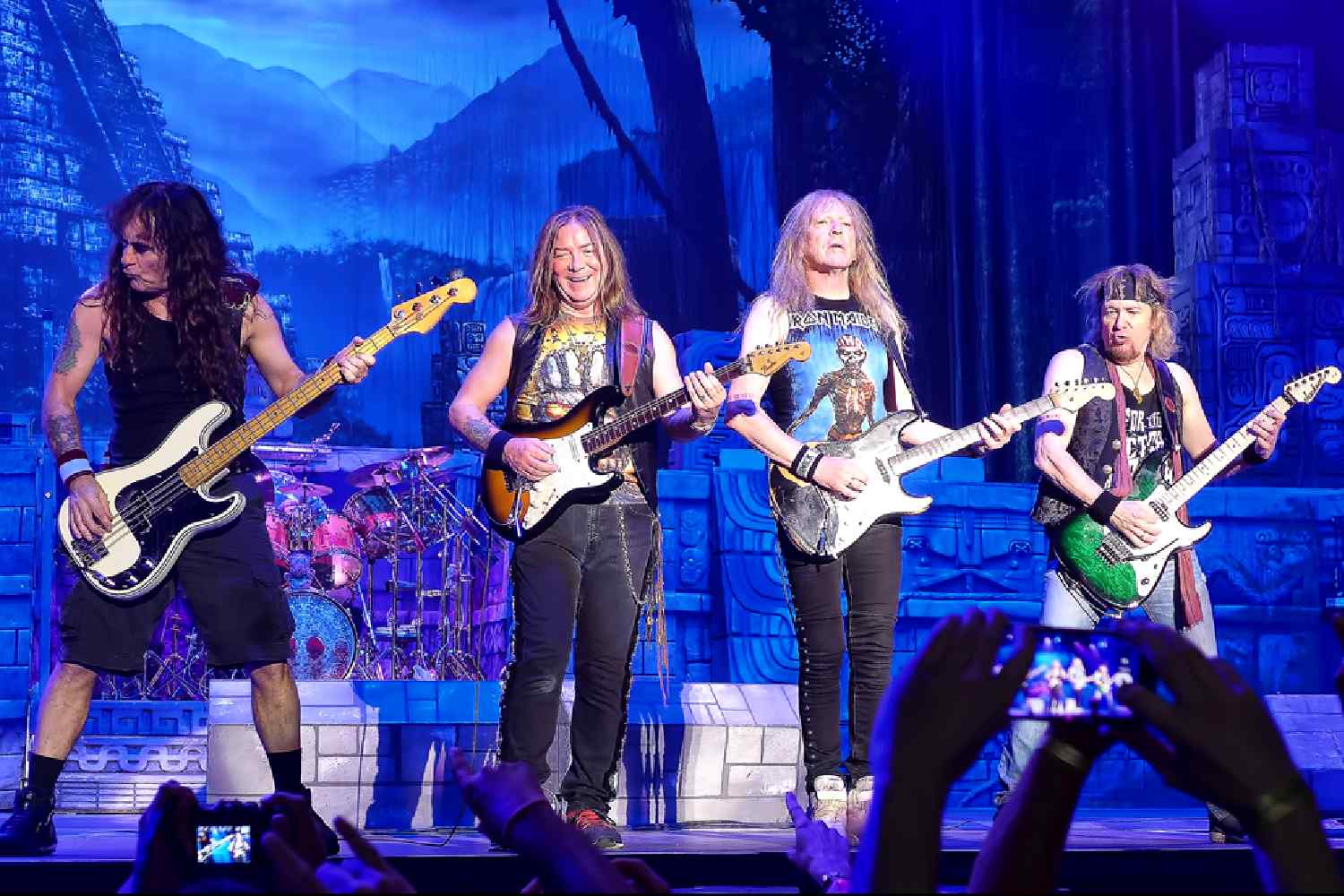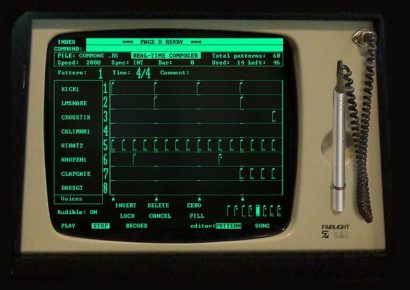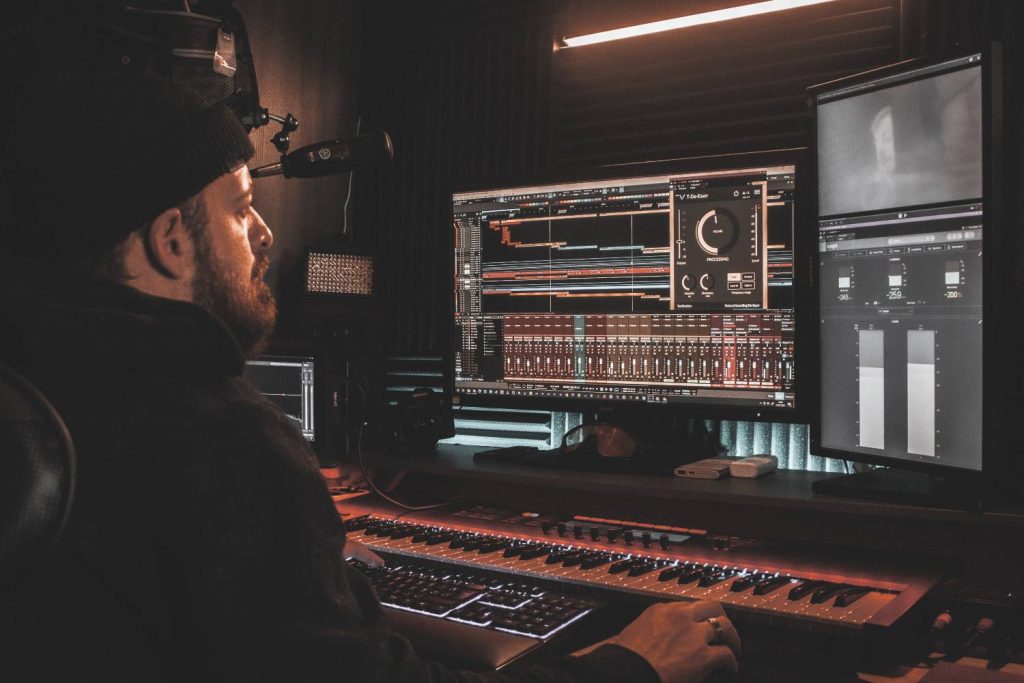Duelling solos while a rhythm guitar continues?! Sign us up!
The passing last week of Dickey Betts of The Allman Brothers Band put the spotlight on the great classic bands with a three-guitar attack.
How these bands ended up with the triple-prong has often been more accidental than a pre-determined strategy, and with various reasons.
Here we look at ten of them.
THE ALLMAN BROTHERS BAND
They burst out of the American South in the late ‘60s with a mix of boogie, blues, jazz and country, and became one of the most influential American bands with “Ramblin’ Man” and the instrumental “Jessica”.
Read all the latest features, columns and more here.
Their fret trinity lineup included the brilliant Duane Allman, Betts, and Gregg Allman who alternated with keyboards.
They finally broke through with At Fillmore East (1971) which demonstrated their interplay on extended versions as “In Memory of Elizabeth Reed” and “Whipping Post”.
Through The Years
Through the years the band suffered fatal motorbike accidents, suicides, court battles, break-ups, reunions and almost 20 lineup changes.
Billy Gibbons of ZZ Top, writing for Rolling Stone, said the Allmans “defined the best of every music from the American South in that time. They were the best of all of us.”
He referred to them as “a true brotherhood of players—one that went beyond race and ego. It was a thing of beauty.”
IRON MAIDEN
When Adrian Smith left the British steel merchants in 1990 for a nine year break, in came Janick Gers.
When Smith returned, it was decided Gers stay on – which raised a few eyebrows.
Horribly Wrong
Smith later recounted on My Planet Rocks, “It could have gone horribly wrong, couldn’t it?
“I mean, imagine that with three Yngwies or three Ritchie Blackmores. It wouldn’t work.”
He continued, “Dave [Murray] and I go way back. At first, maybe I thought that Jan and I would do half a set each or something.
Mad Idea
But Steve [Harris, bassist] came up with this mad idea. He suggested to them to have three guitarists.
“I’d like to have been in the room when he said that. But we tried it out.”
Fans embraced the notion, and these days, with their exhilarating triplication attack it’s hard to listen to them as a dual axe force.
QUEENS OF THE STONE AGE
Queens of the Stone Age have been tri-guitarzans since Lullabies To Paralyze in 2005.
But having that format for almost two decades has led to a sparkle in their albums, they are quick to admit it has its challenges.
It’s all about discipline, according to Troy Van Leeuwen and Dean Fertita.
Used Live
“If it can’t be used live, then it doesn’t belong there, which means we have to be restrained in the studio.
“It also means we try and record as live as possible, keep the tone as clean as possible, and keep overdubs to a minimum.”
FLEETWOOD MAC
The story of the three guitarists in early Fleetwood Mac (the London ‘60s blues version) could easily make a Netflix drama series.
Founder Peter Green (born Greenbaum) spent his teen days being bullied for his Jewish faith, and got his revenge by becoming one of the best blues guitarists to come out of England.
Pick Ups
He set up the pickups on his “Magic” 1959 Les Paul Tone to be magnetically out of phase – one oriented north-to-south and the other oriented south-to-north – to give him a unique sound.
After removing the bass pickups and reversing the process, Green remembered, “I put it back on the wrong way around so that the poles—the pickup screws—were facing in the opposite direction.
“People would say to me, ‘You got that special out-of-phase sound.’ I don’t know what out-of-phase is.
“Phase for what?
“People would say that I got a special sound and try to force me to agree, but I don’t think so.”
Whiz Kid
Following a stint with John Mayall’s Bluesbreakers (where he had replaced Eric Clapton), Green discovered a teenage slide whiz kid Jeremy Spencer.
He told him, “You’re the first guitarist to make me smile since Hendrix.”
In July 1967 he got Spencer and his Gibson ES120T into his new band Fleetwood Mac.
Tensions Spill
Tensions quickly spilled over when Spencer seemed unwilling to play on Green’s songs.
So Green had to bring in a third guitarist, 18 year-old Danny Kirwan, after 1968’s Mr. Wonderful,
He was knocked out by his songwriting and how he got a subtle tremolo effect from his fingering.
Kirwan and Green musically got on well, the teenager’s melodic style on his Les Paul giving Green the confidence to develop a style away from traditional blues.
Hits
Fleetwood Mac hits included “Albatross”, “Man Of The World” and “Oh Well (Pts. 1 and 2)”.
Spencer didn’t play on these recordings except for piano on the beautiful “Oh Well Pt. 2”.
Green took too much acid and left the band in 1970 after a nervous breakdown.
Grave Digger
He took to religion, became a gravedigger, and rejected money as an evil.
The story goes he once turned up to the band’s accountant’s office with a shotgun demanding he stop sending him royalty cheques.
In the late 1990s he made a low-profile return with Peter Green’s Splinter Group, and living with poverty and mental illness, died in July 2020 aged 73.
Never Came Back
In 1971 during a series of concerts in Los Angeles, Jeremy Spencer left their hotel and never came back.
He was found three days later in a Christian street mission run by the Children of God.
The hot-tempered Danny Kirwan found it hard to cope with fame, becoming an abusive alcoholic.
Sacked
In 1972 he was sacked after an incident after a screaming argument backstage over tuning.
He refused to go onstage and smashed his guitar.
He lived in a homeless shelter for four years battling his demons, and died in London in June 2018, aged 68, officially in his sleep after contracting pneumonia.
Later Guitarist
A later guitarist, Los Angeles born Bob Welch, the son of a Hollywood scriptwriter and producer, left Mac in 1974 and died by suicide in 2012.
Another guitarist Bob Weston was sacked during a US tour when drummer Mick Fleetwood discovered him having an affair with his wife.
LITTLE RIVER BAND
Harmony rock Little River Band, who formed in Melbourne in March 1975, always had three guitarists – founder songwriters Graeham Goble and Beeb Birtles, with a revolving door of lead axemen.
Of the 30 members that went through the ranks, nine were guitarists.
But the changes didn’t affect the band’s popularity, based on a strong bags of songs and a sound tailor-made for American radio.
30 Million
They sold 30 million albums and proved back then it was possible for an Australian-based act to have platinum hit singles and albums in the US and Europe.
Graham Davidge left even before their first performance, after which Phil Manning of Chain was approached.
Solo Career
Manning wanted to focus on his solo career and suggested Rick Formosa, who’d migrated from Canada and working in a record store.
Through the years, some of LRB’s skilled guitarists were David Briggs, Steve Housden and Paul Gildea.
KING GIZZARD & THE LIZARD WIZARD
Their current (and 25th studio work) Silver Cord from late last year might be heavily synthesiser inspired.
But King Gizzard & the Lizard Wizard’s trifecta axemen in the ranks – Stu Mackenzie, Joey Walker and Cook Craig – have played a major role in the band’s prolific don’t-repeat-ourselves approach, in their tones and use of effects.
For the uninitiated, check out their 86-track eight-hour official bootleg Live At Red Rocks ’22.
Flying Banana
On Flying Microtonal Banana, they had their instruments modified, including adding extra frets to guitars and basses, re-pitching vintage keyboards, and even altering a harmonica.
But having three was never a deliberate idea.
When KGLW first came together, it was as a fun jam thing.
People from different bands would get together and improvise on a note, a lyric phrase or chord, and bash away to their heart’s delight.
Sometimes Ten
Sometimes there’d be three, sometimes ten. In the end when the dust settled and KGLW took shape, it just happened three shredders were in the mix.
Their guitar collection includes Hagstrom F12 12-string, 1967 Yamaha SVG800 Flying Samurai, Flying Banana Microtonal Guitar built by Melbourne’s Zac Eccles, 1965 Yamaha SG-3, Godin Richmond Dorchester, a 1965 Burns London short-scale jazz, Jazzmasters C# Standard and a Flying V.
For amps Mackenzie and Walker use Fender DeVilles. Craig’s choice is a Roland JC-120.
LYNYRD SKYNYRD
There was a tradition by ‘70s southern boogie bands, like Molly Hatchet and Black Oak Arkansas to have a triple axe thunder.
But Lynyrd Skynyrd did it better, wrapping that style around timeless anthems as “Sweet Home Alabama”, “Saturday Night Special” and “Free Bird”.
The original lineup first bonded playing baseball at school, and was inseparable.
Inevitable
It was inevitable that guitarists Gary Rossington, Allen Collins and Ed King would stay together when they put a band together.
“When we started,” said Gary Rossington, who died last year, “We all helped each other improve by jamming often.”
Partial
They were partial to Gibsons but different models as Firebirds, Explorers and Bernices. “We always chose guitars to sound different, so people would know who was playing what.
“I’ll tell you what I find unique. When you listen to the Skynyrd records from the beginning, when you hear the leads you’d know who it was as the tone and style would suit the song.
“The three guitarists were identifiable. I loved that about them just as I love the style of those.”
Playing
They began playing in various bands from 1964 before forming Skynyrd in 1969, naming themselves after their physical education teacher Leonard Skinner who’d tick them off for having long hair.
Rossington dropped out of school refusing to have his hair cut.
Through the years, when new names as Steve Gaines (who was one of the six who perished in the infamous plane crash of October 20, 1977), Rickey Medlocke and Mark ‘Sparky’ Matejka entered the ranks, they kept to the original formula, even as the current band continues to record without any original members.
BRUCE SPRINGSTEEN & THE E-STREET BAND
In 1984 Steve Van Zandt quit the E-Street Band. As his childhood best friend Bruce Springsteen was becoming a megstar, he felt his advice was no longer being heeded as it once was.
Having had tunnel vision to make it in music, Van Zandt decided to learn about the world.
He launched the anti-apartheid Sun City campaign (“the one accomplishment in my life that will mean something”), acted in TV’s The Sopranos and made solo recordings.
Return
When he did return in 1999, The Boss decided to keep Nils Lofgren as well.
Not too many Springsteen songs need a three-prong attack but having these axes duelling onstage certainly made the live shows more exhilarating.
Buried
Bruce always said that he would be buried with his trusty 1950s Fender with a Telecaster ash body and aple Esquire neck and black pickguard, four pickups wired into extra jacks which he bought in 1973 at the start of his career for $185.
Played on every single concert he did, it’s on the cover of Born to Run, Live 1975-1985 and on 2012’s Wrecking Ball.
By 2005 it was obvious it was deteriorating, and insurance companies were asking up to $5 million.
Bruce uses a series of lookalike soundalike Telecasters when he goes on tour.
Collection
Van Zandt’s collection has included a 1999 Fender Stratocaster, a Gretsch Tennessean Electric, a Rickenbacker Tom Petty Limited Edition Model 660/12TP Electric, Gretsch G6118T Anniversary, a ’57 and a ’67 Strat, a Gibson Firebird and two hollow-body 12-string Ovation guitars, with pickups.
Lofgren’s collection has included a Fender Jazzmaster Candy Apple Red 1974, a ’52 Gibson Les Paul Goldtop, an Epiphone Les Paul and the oldest being a Gibson L-10 from the ’20s.
FOO FIGHTERS
Dave Grohl makes decision on the fly.
One of these bringing in long time friend and one time Nirvana touring member Pat Smear (born Georg Albert Ruthenberg) as the Foos third man alongside him and Chris Shiflett.
The set was revamped so that all the guitar parts were divided equally.
Hectic Touring
Smear left in 1997 partly because of Foos’ hectic touring schedule (he’s ten years older than the others) and partly because he was getting irritated with Grohl’s controlling nature.
But after his replacement was fired, he rejoined in 2005 for an acoustic theatre tour that eventually became the live album Skin and Bones, and became a full member again in 2010.
Gibson Person
A Gibson person, Smear is usually toting a Barney Kessel, but also likes the rare Johnny A and White SG Custom.
For a full run down of his gear, check back to an earlier Mixdown piece.
THE EAGLES
For a band that thrived on creative tension, everything about The Eagles was meticulously crafted and in its place.
The three guitars intricately added colour and voice to the songs, and everything about the recording process – the writing, the playing, the harmonies the engineering and production – was thought out.
No Mistakes
“There were no mistakes on Eagles records,” said former member Don Felder, who went on to reveal that some of his guitar work was inspired by him imagining he was playing a sax or trumpet.
Live, the songs were recreated as recorded. As members were sacked or died, their replacements carried on the tradition.
Current Lineup
The current lineup is Don Henley, Joe Walsh, Timothy B. Schmit, Vince Gill and Deacon Frey.
Gill, a major solo act on his own right is a tremendous player and singer who more than does justice for Glenn Frey’s songs.
Liner Notes
In the liner notes for the Australian Road Crew Association’s Desk Tape Series, in which he donated a tape of a Melbourne show he did with fellow guitar hero Albert Lee, Gill revealed slipping into The Eagles had been very quick.
“I was a massive Eagles and Joe Walsh fan, every album every track,” he said. “Long before I became golfing buddies with some of those guys.”
With The Eagles, Gill tours with eight or nine axes, including an Italian Esquire, two Strats, two Les Pauls, and two Martin acoustics, one of which he converted to a five string.
Keep reading about the effects Troy Van Leeuwen uses to nestle into a three guitar lineup here.







